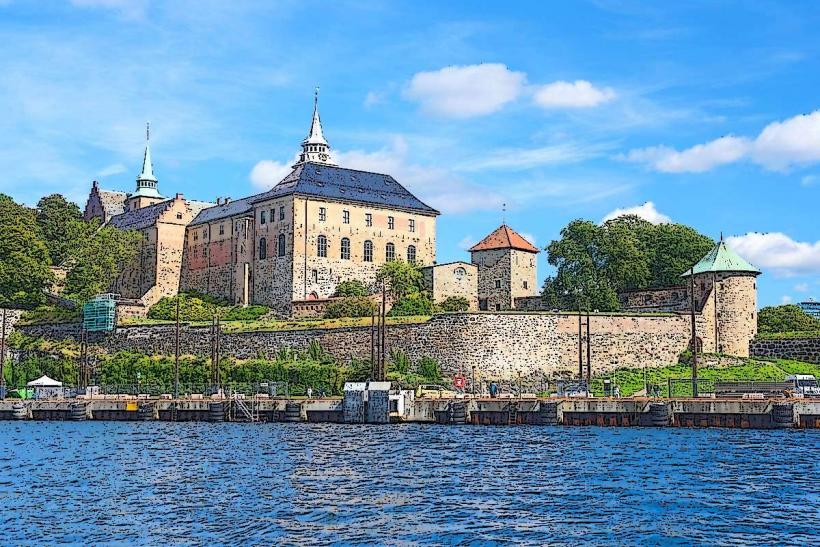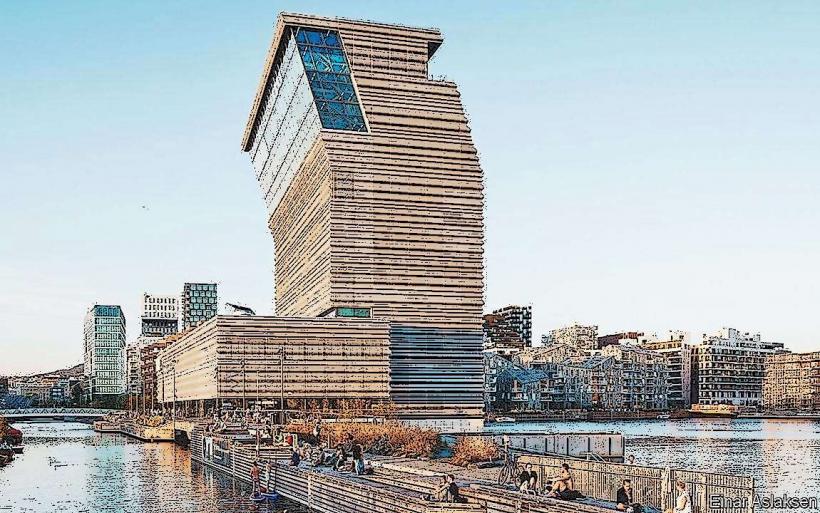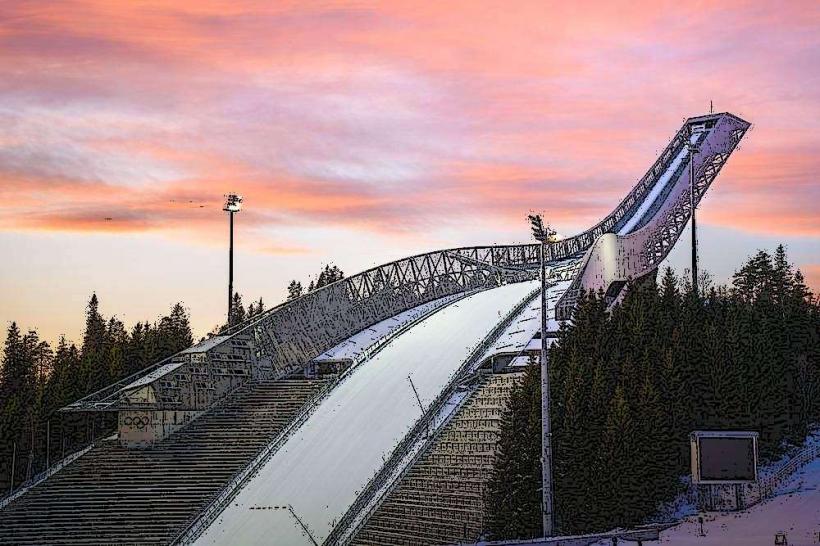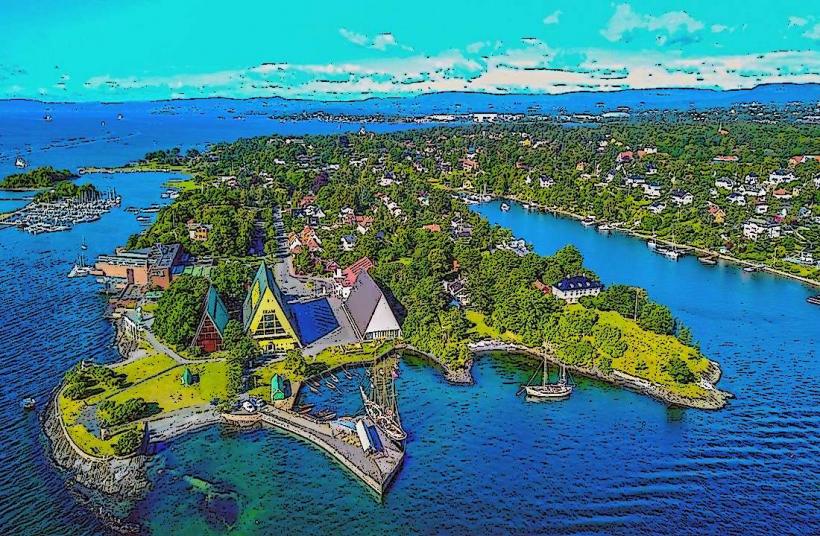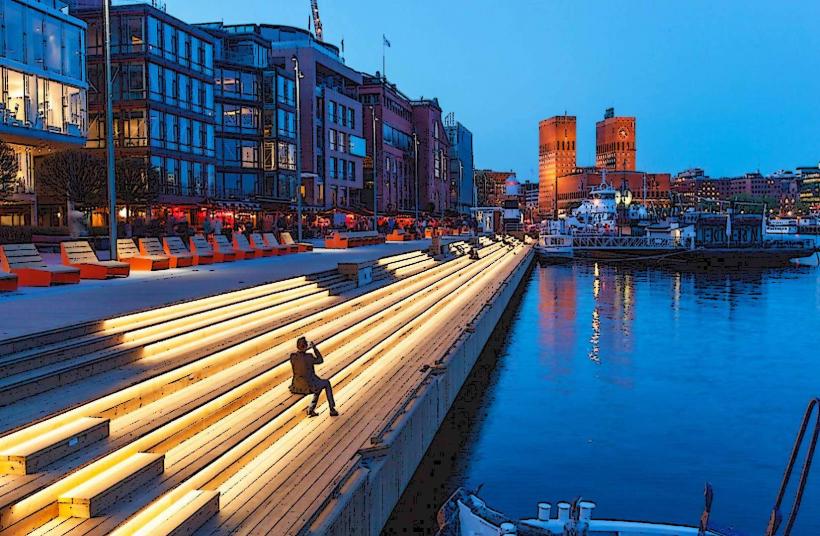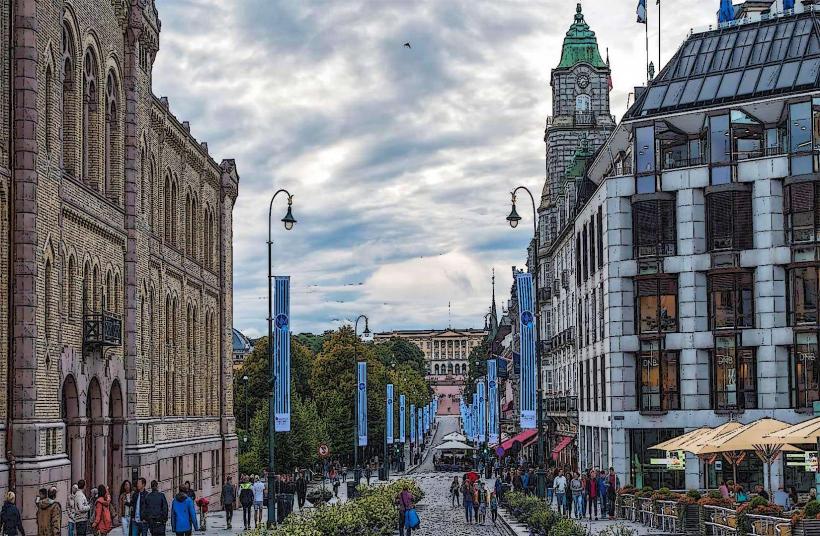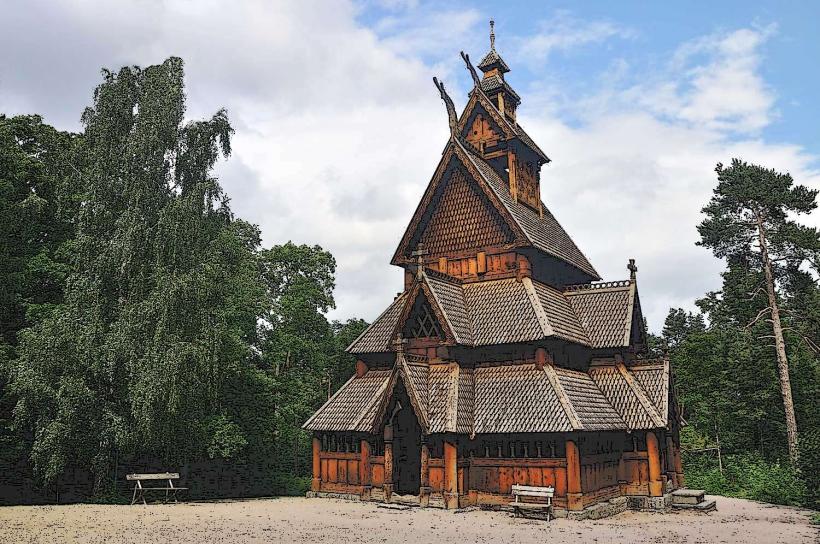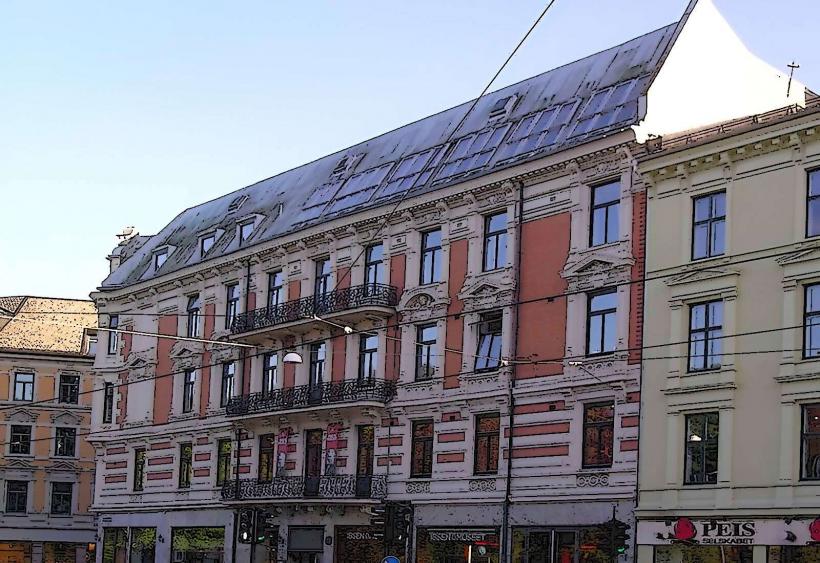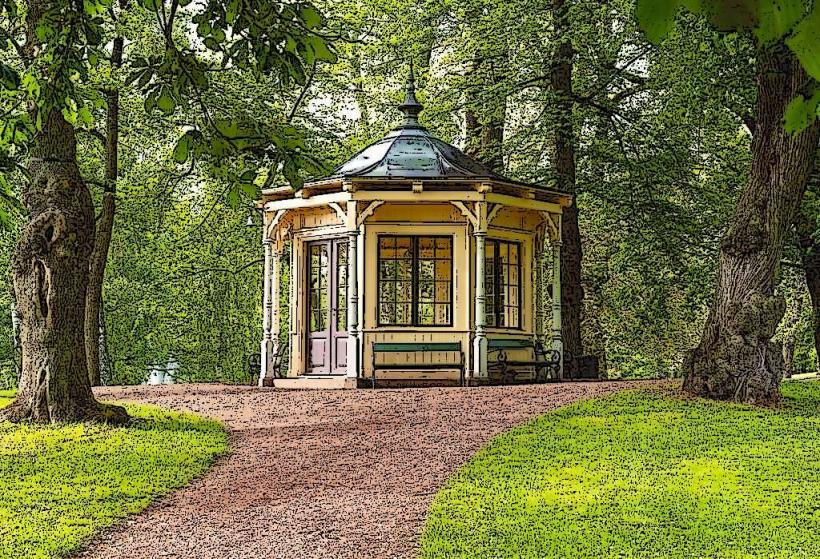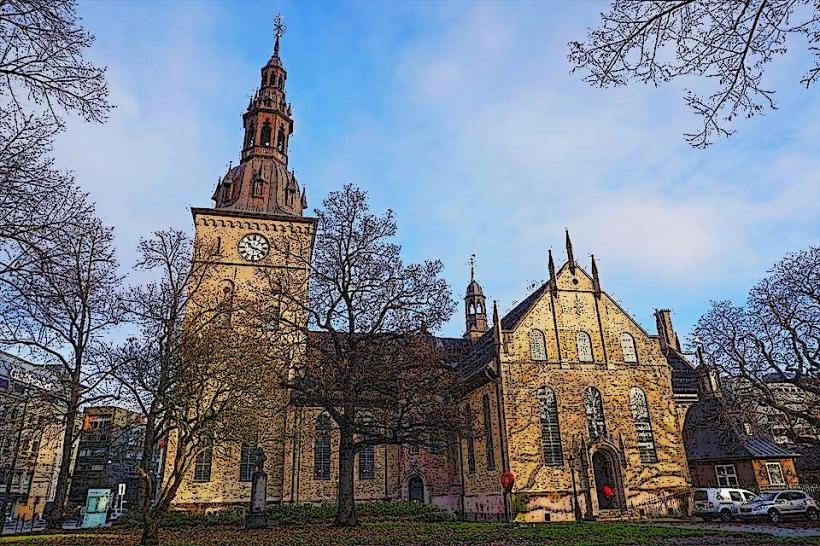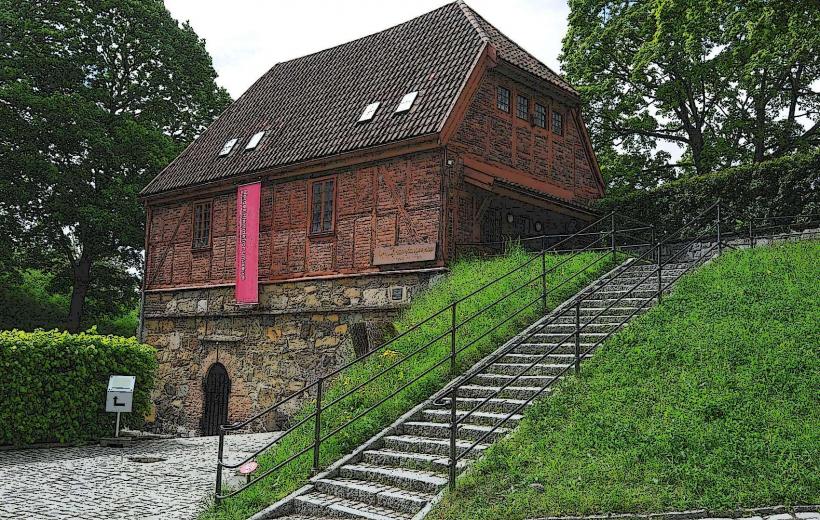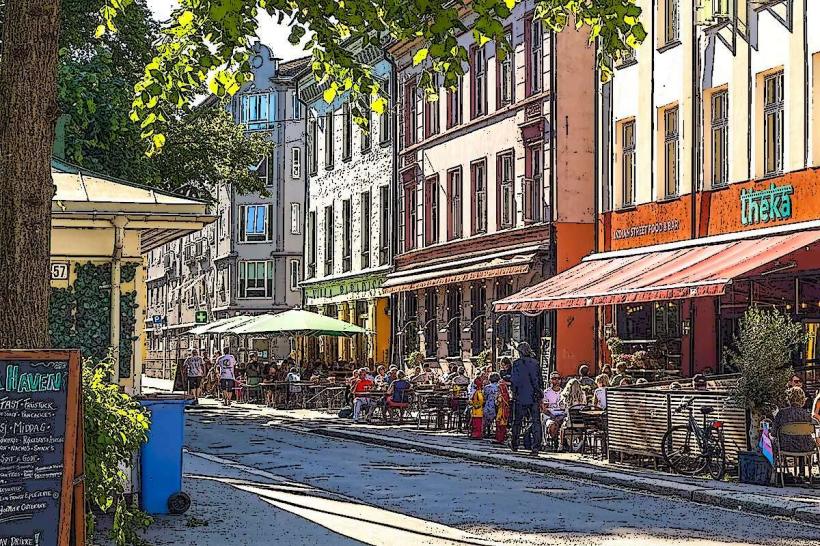Information
Landmark: OslofjordCity: Oslo
Country: Norway
Continent: Europe
Oslofjord, Oslo, Norway, Europe
Overview
The Oslofjord curves around the city, shaping its geography and glinting in the sunlight, a broad sweep of blue that frames Oslo’s skyline, on top of that this fjord-among Norway’s most famous and easiest to reach-cuts deep into the Skagerrak, the crisp, slate-blue strait between Norway and Denmark, and winds its way into the country’s southern coast.The Oslofjord, with its calm blue waters and scattered green islands, is famed for its beauty and outdoor adventures, and it’s woven deeply into Oslo’s identity and tourism, simultaneously the Oslofjord runs about 100 kilometers (62 miles), starting in the wave-lashed Skagerrak to the south and winding its way up to Oslo in the north.In places, the fjord runs surprisingly shallow, but it plunges toward the open sea, dropping to about 500 meters (1,640 feet) in its deepest stretches, consequently like most Norwegian fjords, the Oslofjord took shape some 10,000 years ago, when Ice Age glaciers scraped and carved the valley that now cradles its waters, for the most part Glacial forces carved the surrounding hills and scattered rocks, leaving their mark on the land, as a result the Oslofjord holds a sprawling archipelago of about 50 islands and tiny islets, many just a short boat ride from the city.Among the fjord’s favorite spots is Hovedøya, where you can wander past weathered monastery ruins, stroll sandy coves, and follow quiet forest paths, therefore just a short boat ride from downtown Oslo, Lindøya is one of the city’s most popular islands, with rows of vivid wooden houses and a quiet shoreline that feels far from the bustle.Just so you know, Many visitors seeking a quiet day trip head to Nakken, a larger island with winding hiking trails and hidden coves perfect for lingering in the sun, in addition gressholmen draws nature lovers with its sweeping views, lively bird colonies, and well-marked paths.Bleikøya, thick with pine and birch, offers a peaceful escape for those eager to wander the more secluded corners of the archipelago, besides out on the water, the Oslofjord invites exploration, and several tour boats set off from Oslo’s waterfront each day.Curiously, From the deck, visitors take in sweeping views of the city, scattered islands, and the green sweep of surrounding hills, often with a guide sharing stories about the area’s past and its wildlife, at the same time many boat trips pull into quiet island harbors, letting travelers hop off to wander on foot or pedal along winding trails.Out on the fjord, calm water and steady breezes create ideal conditions for kayaking and sailing, whether you’re a first-timer or a seasoned skipper, likewise paddling a kayak across the fjord’s glassy water lets you slip close to the islands and detect their rugged edges from a fresh angle.The hills and islands nearby are crisscrossed with trails, perfect for a long hike or an unhurried roam among pine and wildflowers, also you can wander the well-marked trails on Hovedøya, Nakken, and Gressholmen, where paths wind toward quiet beaches, green forests, and sweeping viewpoints over the water.In summer, the fjord’s coastline is perfect for languid walks and picnics-think a blanket spread on warm rock, furthermore fishing’s a favorite here too, with cod, mackerel, and salmon plentiful in the deep blue currents.You’ll find plenty of spots along the coast, and locals offer fishing trips if you want to reel in your own catch, at the same time around the Oslofjord, several islands and stretches of shoreline have sandy beaches where you can swim or stretch out in the sun with your toes in the water.As it happens, In summer, these beaches draw both locals and visitors who come for the salty breeze and sweeping fjord views, with Bygdøy Peninsula among the top destinations and Paradisbukta a favorite for a swim; the Oslofjord itself has long shaped the growth of Oslo, once known as Christiania, as well as for centuries, it carried goods and travelers along its waters, tying the city to Norway’s rugged coast and Denmark’s busy ports, somewhat The fjord carries a deep maritime legacy, dotted with weathered lighthouses, sheltered harbors, and classical stone forts along its winding shore, while perched above the fjord, Akershus Fortress was first built to guard the city from enemy ships, and its stone walls still stand as one of its most pivotal historic sites.You can still spot traces of Viking settlements and weathered medieval buildings scattered through the countryside, what’s more cultural Events: The Oslofjord offers more than stunning scenery-it’s also alive with concerts, art shows, and summer festivals under the long northern light.Not surprisingly, In summer, the fjord comes alive with music festivals, open-air plays, and art installations, sometimes spilling color and sound right to the water’s edge, in turn many of these events draw on the fjord’s one-of-a-kind atmosphere, staging music on bobbing platforms or setting dancers against the glittering sweep of the waterfront.The Oslofjord teems with life, from seabirds wheeling over the waves to fish darting through the nippy, green depths, also it’s home to a rich mix of life-schools of silver fish, wheeling seabirds, and sleek marine mammals gliding through the water.The fjord serves as a vital rest stop for migratory birds and a nesting site for local species, where you might spot gulls wheeling over the water; in recent years, conservation work has stepped up to safeguard the Oslofjord’s fragile ecosystem, as a result these efforts focus on protecting the water’s clarity, restoring local ecosystems, and encouraging tourism that treads lightly on the land.They’ve worked to cut pollution and keep maritime traffic running smoothly in the region, guiding ships as carefully as threading a needle, meanwhile in the end, the Oslofjord remains one of Oslo’s most treasured natural and cultural landmarks.Curiously, With its sweeping views, open trails, and rich history, it draws both locals and visitors who want more than just a pretty venue to spend the day, as a result you might sail past rocky islands, drift over glassy water, or uncover centuries of seafaring tales-whatever path you take, the Oslofjord offers a rare chance to soak in Norway’s breathtaking scenery and vibrant maritime heritage., fairly
Author: Tourist Landmarks
Date: 2025-09-04



